As I pointed
out in the previous post, Heck cattle is a very heterogeneous breed – some
herds may have no resemblance to the aurochs at all, while others can have an
overall appearance quite reminiscent of their wild ancestor. Last week, I had
the opportunity to visit such a herd: the Heck cattle of the island Wörth in
the Bavarian lake Staffelsee. This is certainly one of the most spectacular
Heck cattle lineages, if not the most spectacular. I met with their owner
Walter Frisch and his son Gregor Frisch, who established a quite stable breed through
consequent selective breeding that is most notable for very large and
aurochs-like horns. Down below, you see some photos that I took there.
 |
| Cow "Erni", one of the most aurochs-like Wörth Heck cows |
The history of this lineage. Walter Frisch started breeding Heck
cattle in 1981 and composited his stock using individuals from the Zoo Hellabrunn
in Munich and the Wildgehege Neandertal in North Rhine Westphalia. Those two
lineages display an aurochs-like coat colour and usually have horns of usable
size and curvature. The Neandertal lineage became an important breeding centre
of Heck cattle after the Second World War and descends from a Watussi x Heck
cattle cow born in the 1950ies. Watussi cattle is a half-zebuine and half-taurine
breed with very large horns that is hardy and originated in Africa. Because the
Neandertal lineage has horns of large sizes that (roughly) resemble those of
the aurochs in curvature, and diverging coat colours had largely been purged
out, it had considerable influence on many other Heck cattle herds. The
Hellabrunn lineage has a very aurochs-like coat colour (but don’t get too
euphoric about that, some Iberian breeds do that as well) and roughly usable
horns, I might post some photos of the contemporary members of that herd soon.
The purpose
of Mr. Frisch’s breeding was and is to achieve and stabilize an aurochs-like
phenotype by selection and also inbreeding. His breed did not have influence of
other herds during the last 20 years and displays horns much more aurochs-like
than most other Heck cattle herds. With a shoulder height of 160 cm for adult
bulls, the Wörth lineage also has the largest pure Heck cattle. Walter Frisch
and his family started breeding in Steinberg, in 2005 the herd was moved to Wörth.
 |
| Bulls and cows from Wörth |
Evaluating the phenotype. Wörth Heck cattle have a wild type
coat colour, but bulls tend to have a saddle in some cases and there are some
pretty dark cows, varying from a bull’s colour to dark brown with a saddle and lightly
brown. Basically, the cows have a lighter colour than the bulls. The breeders’
target for the bulls is a solid black and for the cows a dark brown with a
light saddle on the back, and they select against cattle not fitting these
criteria. I miss a bit of the reddish portion in the coat colour, though. Strongly
deviant colours, such as a grayish or piebald coat, never showed up in this
lineage.
The horns
of the Wörth lineage are excellent overall. The angle between horns and snout
usually varies between 90° and 70°, so they should face a slightly more
forwards but that’s no major issue, and some cows like “Erni” do have horns
facing more forwards. The curvature of the cows’ horns resembles that of the
aurochs very closely, while the horns of bulls tend to be a bit too much outwards
in my opinion. Horn length and thickness perfectly match the data for the
aurochs’ horns – adult bulls have a horn span of 100 cm, their horns have a
length of 90 cm and a circumference of up to 14 cm at the base. Although this kind
of horns are stabilized in the herd, there are some individuals with diverging
horns, some may have a slightly different curvature or small horns, but these
individuals will be selected out. The skull of Wörth Heck cattle is slim in
some cases, but IMO shorter and more paedomorphic than in the Aurochs. The
members of the herd have longer legs than average Hecks, some also have a comparably
short trunk resulting in the “aurochs condition” of trunk length and withers
height equalling each other, but others also have slightly shorter legs than in
the aurochs. Their body shape is, like in any cattle living freely all the year
round, comparably slender, but still has a domestic condition in having a more
or less bulky waist and virtually no “hump” in cows. However, some bulls of the
Wörth lineage show a decently S-shaped back line and a little hump, unlike many
other Heck bulls. The size of fully grown bulls is about 160 cm and cows vary
between 140-160 cm, which is within the aurochs’ size range (UPDATE: I am a bit doubtful about these numbers today. If some individuals grow that large, they are certainly larger than those I saw there). The size of the
dewlap and udder is variable.
For comparison, I provide you with two aurochs reconstructions, which I think give an accurate impression of what the most Aurochs individuals looked like (with subtle variation in horn shape and colour, some cows might have been as dark as the Wörth cows):
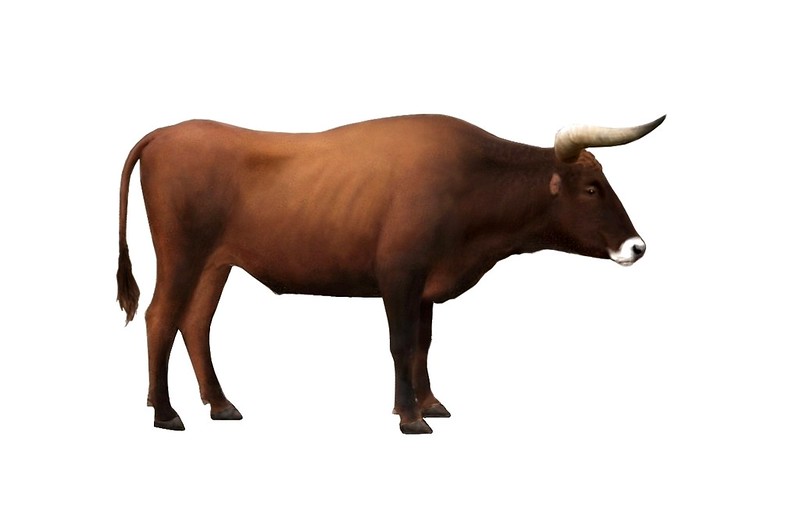 |
| My reconstruction of the Cambridge specimen (cow). All rights reserved. |
 |
| Reconstruction of the Vig specimen (bull). © Thomas Hammond. |
All in all,
I was very happy with what I saw. Of course there are differences between the
Wörth Heck’s phenotype and that of the aurochs, and of course some individuals can
have deviant features (a problem common to all projects working with
crossbreeds), but the similarities regarding the horns, size and colour are
very pleasing. The overall condition of the horns is more primitive than in
most other cattle on this world – some Iberian cattle might have a more
aurochs-like curvature, and some Barrosa or Watussi might have horn dimensions
just as good, but in Wörth Heck cattle both aspects resemble the desired wild
bovine, and I don’t know anything to criticize about the horns of cows like
“Erni” and others.
 |
| Cow "Erni" has perfectly aurochs-like horns |
However,
there are some features that I miss in this lineage, such as longer legs, a more
athletic body shape, larger hump, longer skull, a stronger-marked sexual
dimorphism and a stronger red in the coat colour of the cows and calves. A
Sayaguesa crossbreed from the ABU might add that, but I don’t know if the
breeders would like to include such a cow since the primary target for the
Wörth lineage is to stabilize their features.
The herd. The Wörth herd currently is composed of 15
cows and 5 bulls plus a few calves. All of the bulls are quite young and they
partly descend from the bull “Aretto”, a very important bull of that lineage
that unfortunately passed away not long ago. I liked one of the bulls whose
name is “Aribo” particularly, and if I remember correctly, he is designed to
become Aretto’s successor as the new breeding bull on the island. There are two
other bulls (which names I don’t know) with a saddle but mighty horns, and
another one that happened to have more straight horns than the other bulls.
None of the bulls was fully grown yet. Of the cows, I liked Erni and Arizona
the most because of their horns and colour, but the others had a decent
appearance as well.
The herd
gets supplementary food during winter, because the island is simply too small
to provide enough food for the herd all the year round. I was told that foxes can
kill newborn calves on occasion.
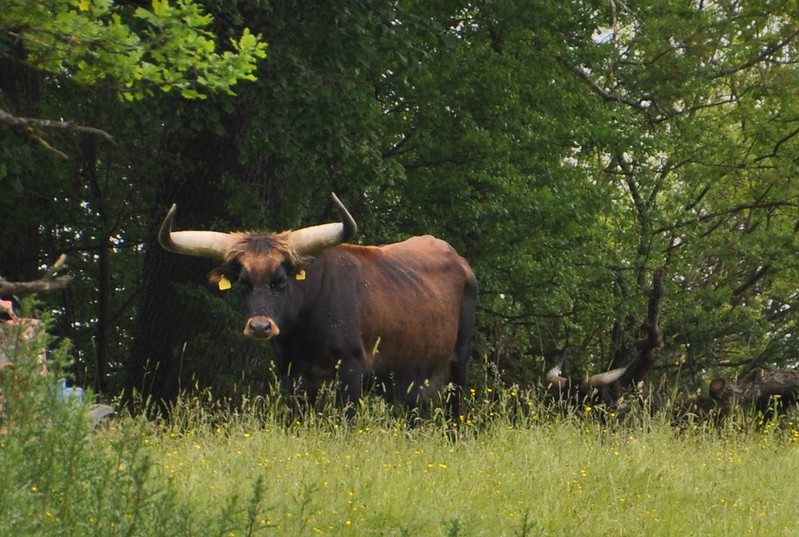 |
| "Erni" is a dauther of "Aretto" |
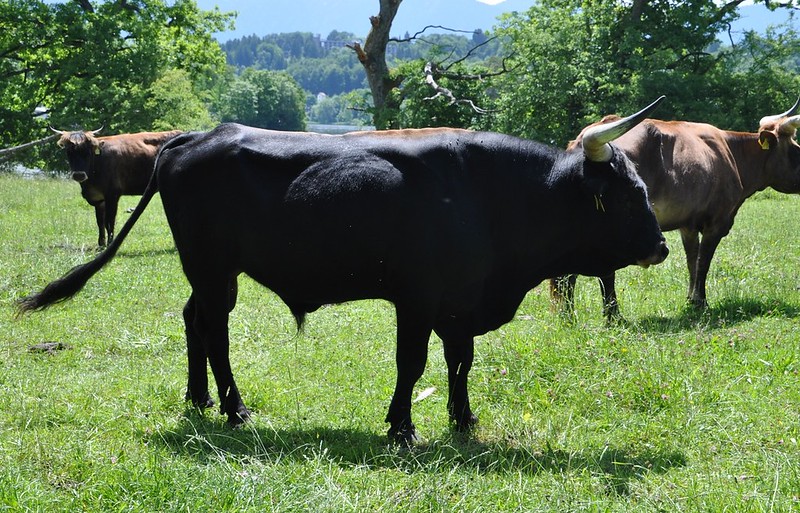 |
| Bull "Aribo", the new designed breeding bull on Wörth |
The behaviour. The most important influence on the behaviour
of cattle is the way the cattle is raised. Any cattle breed shows a “wilder”
behaviour when living with little human contact compared to cattle that spend
their lives in a barn and get touched by humans every day. The Heck cattle on
Wörth would not appreciate to be touched, but they are absolutely not
aggressive. Their behaviour is cautious and curious when people approach. They
show a herding instinct and when one of the young bulls was anaesthetized, the
other herd members were curious on what is going to happen to him.
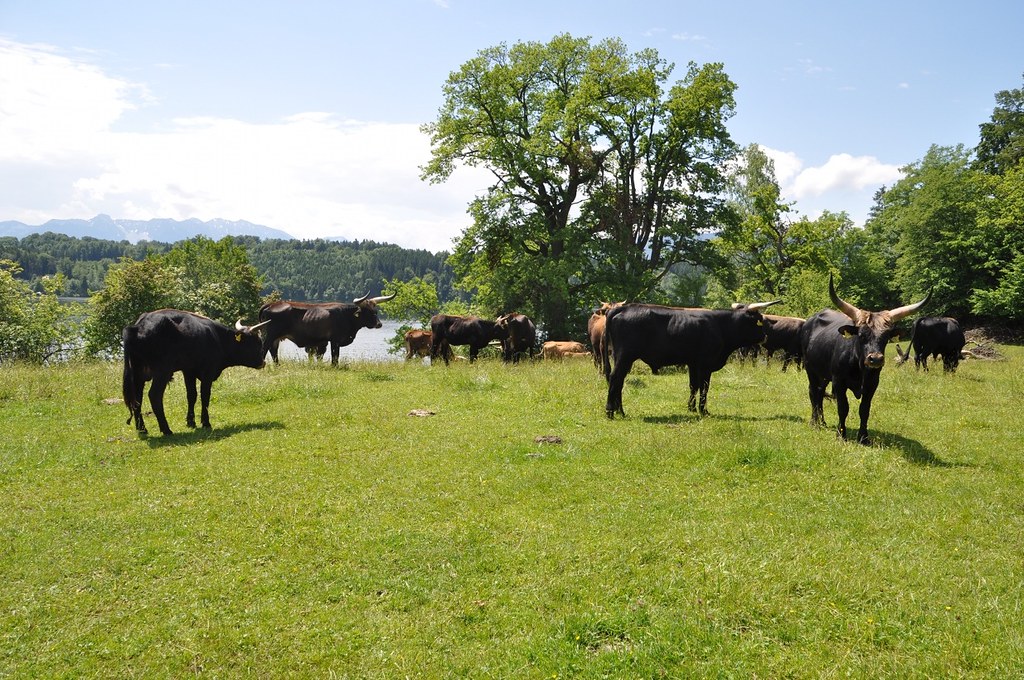 |
| The whole herd |
My trip. I met with Walter Frisch and his son Gregor
Frisch who own and manage the herd. I had the opportunity to not only take a
lot of close-view shots but was also witness when a young bull was anaesthetized
and moved into a transport box because that particular young bull is going to
be the new breeding bull of this herd owned by Michael and Doris Mages,
who were present as well. It was very interesting and enjoyable for me to discuss
about Heck cattle and rebreeding the aurochs’ phenotype. Walter Frisch told me
that he thinks consequent selection is the only way to turn Heck cattle into a
stable and aurochs-like breed as a whole, and I completely agree.
I can only
recommend you Walter Frisch’s book DerAuerochs – Das europäische Rind, published in 2010. It gives a lot of
detailed information on various aurochs remains and useful photos that are a
big help for my reconstructions. You will find more information on the history
of Heck cattle than in any other piece of literature, and also photos of the
very first crosses by the Heck brothers and of course the Wörth lineage. It is extremely helpful for anyone interested in that subject.
In my
opinion, Walter and Gregor Frisch really deserve a lot of credit for their
excellent breeding work. When comparing usual Heck cattle with individuals from
the Wörth lineage, it becomes obvious that they did awesome work and careful
selection, and I hope that the Wörth herd will play a crucial role in the
future devolopment of Heck cattle as a whole.
 |
| Another cow |
Similar herds. Because Wörth Heck cattle have the most impressive
hors of all, many breeders are interested in animals from that herd, so that
this lineage has an increasing influence on German Heck cattle (Aretto was
moved to France before he died, let’s hope he left some traces there as well). The
Neandertal lineage is similar but less stabilized, and in Bayerischer Wald you
can find a Heck herd (also descending from the Neandertal Heck cattle) with
similarly impressive horns, but they are less stable, have a less-marked sexual
dimorphism and their body shape is not as slender.
Since I
covered Heck cattle a lot here during the last two weeks, the next cattle posts
will focus on the Tauros Programme and Iberian aurochs-like breeds.
If you want to see those photos and some more from Wörth in full size, you can visit my flickR album.
Do you find this topic interesting? Check out my book on Amazon!


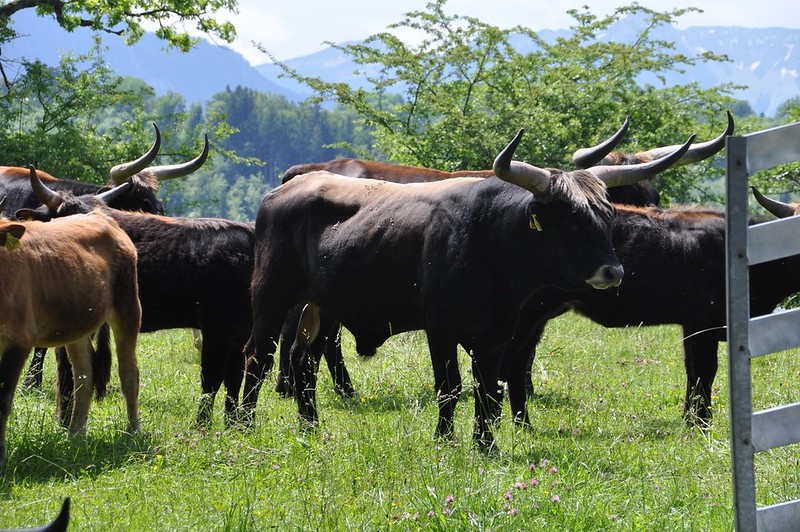
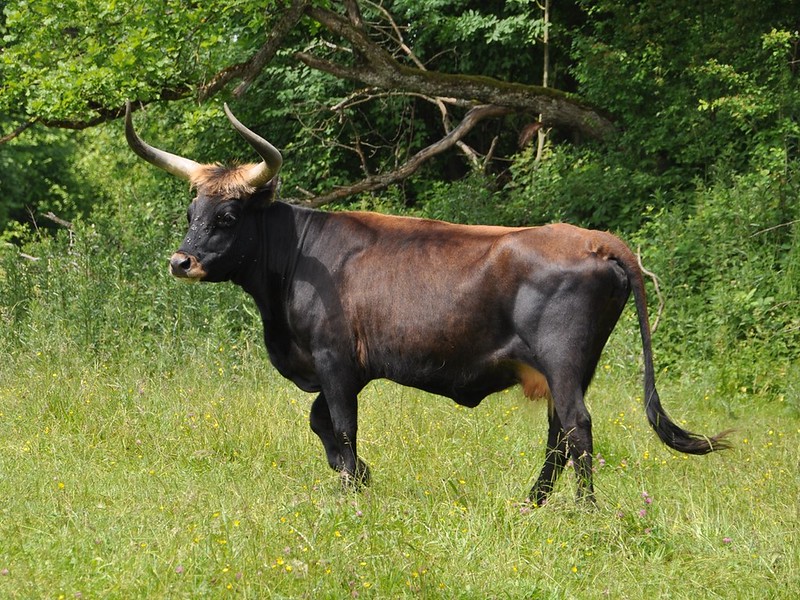

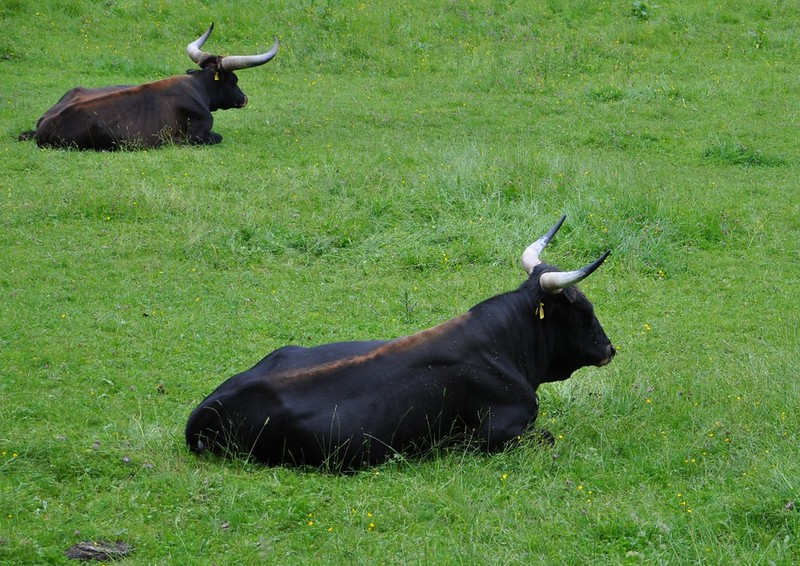

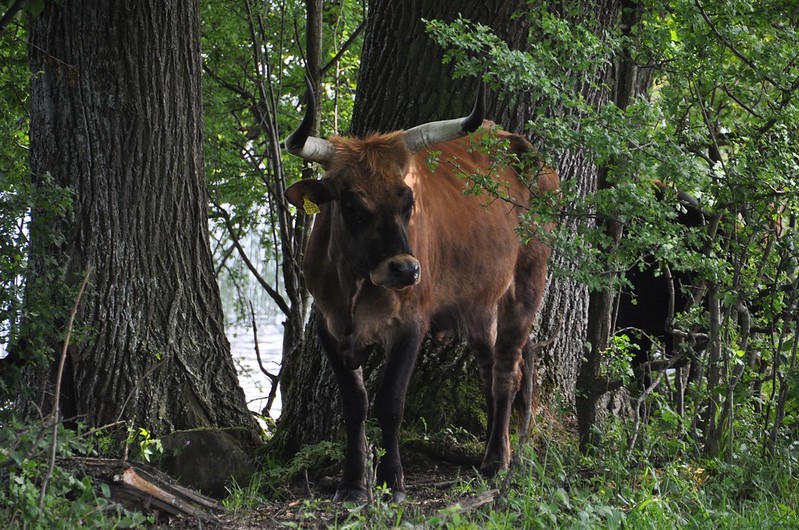

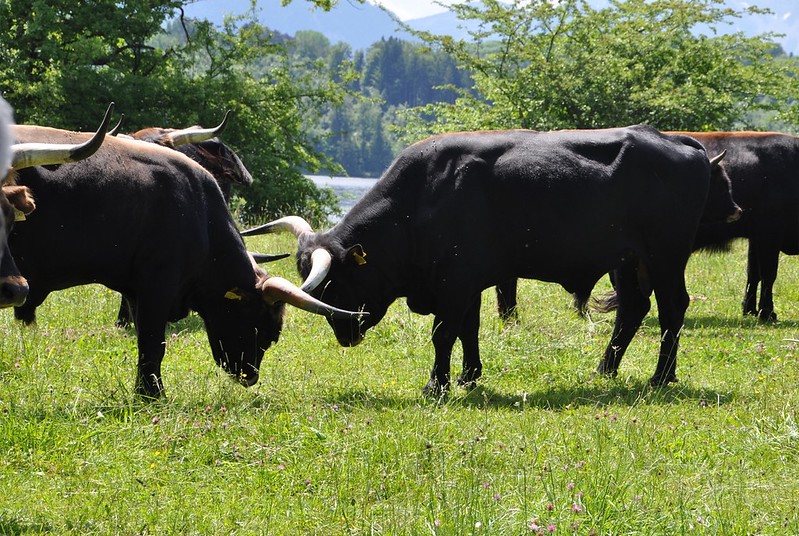
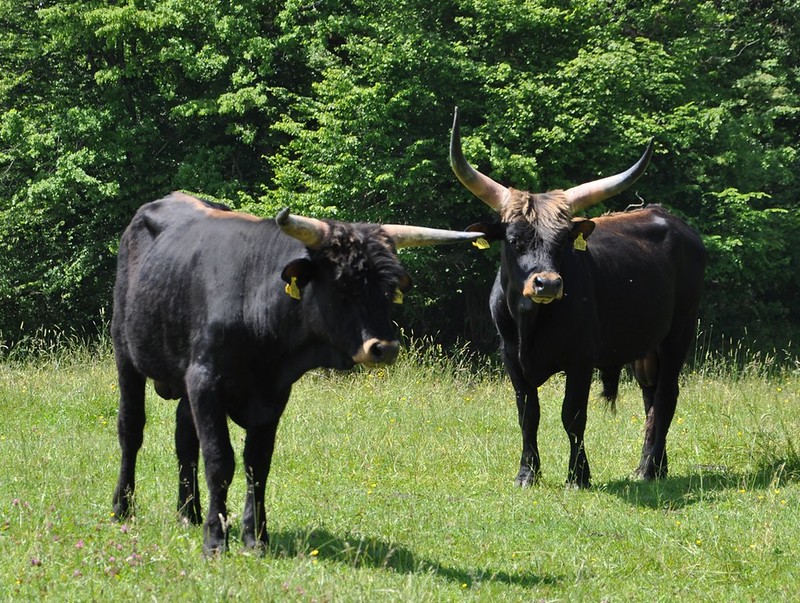
Hi,
ReplyDeleteWe're trying to recreate Aurochs in CGI for a historical programme we're making about Stonehenge for the BBC and are interested in filming graphic plates of Heck cattle to use as a base for our Aurochs. We are planning to be in Vienna later this year and also next year and are very interested in visiting any good sized herds in the area.
I read your article with great interest and was hoping you may be able to put me in touch with Walter or his son Gregor? Likewise I'd love to hear from any other Heck Cattle owners.
Sorry, realise this is a slightly strange request but any assistance would be very much appreciated. I may be contacted at kate.bullions@octoberfilms.co.uk or on +44 (0)207 284 6868.
Best wishes,
Kate Bullions
www.octoberfilms.com
whoah this blog is fantastic i like studying your posts.
ReplyDeleteSttay up the good work! You know, many individuals arre looking round for this info, you can aid them greatly.
I was hoping to discover a correlation of my Bavarian lineage to my namesake !
ReplyDeleteJ. Bradley Heck